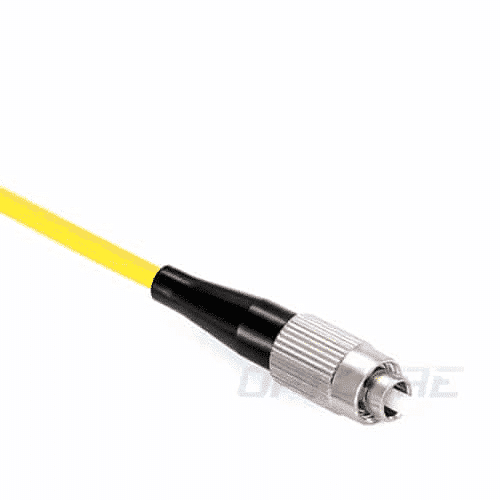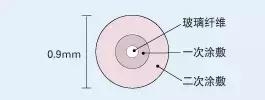
Fiber construction
The optical fiber for communication is composed of glass that transmits optical signals by total internal reflection. The glass fiber has a standard diameter of 125 microns (0.125 mm) and is covered with a resin protective coating of 250 microns or 900 microns in diameter. The central portion of the transmitted light of the glass fiber is called the “core”, and the cladding around it has a lower refractive index than the core, thereby limiting the loss of light.

Quartz glass is very fragile and therefore covered with a protective coating. There are typically three typical fiber coating layers.
Coating fiber at once
An optical fiber coated with a 0.25 mm diameter UV-curable acrylic coating. It is very small diameter increases the density of the fiber that can be accommodated in the cable and is very common.

Secondary coating fiber
Also known as tight buffer fiber or semi-tight buffer fiber. The surface of the fiber is covered with a thermoplastic resin having a diameter of 0.9 mm. It is more rugged and easy to operate compared to 0.25 mm fiber. Widely used in LAN cabling and fiber optic cables with a small number of fibers.

Ribbon fiber
The ribbon fiber improves the efficiency of the connector assembly and facilitates multi-core fusion, which improves work efficiency.

The ribbon fiber consists of 4, 8 or 12 differently colored fibers with a core count of up to 1,000. The fiber surface is covered with UV-curable acrylate material, which can be easily removed using standard fiber stripping pliers for easy multi-core fusion or removal of a single fiber. With a multi-core splicer, the ribbon fiber can be fused at one time and easily identified in a fiber optic cable with a large number of fibers.
Disclaimer: All information indicated as other sources is transferred from other platforms, the purpose is to convey more information, does not represent the views and positions of this site. Please contact us if there is any infringement or objection.